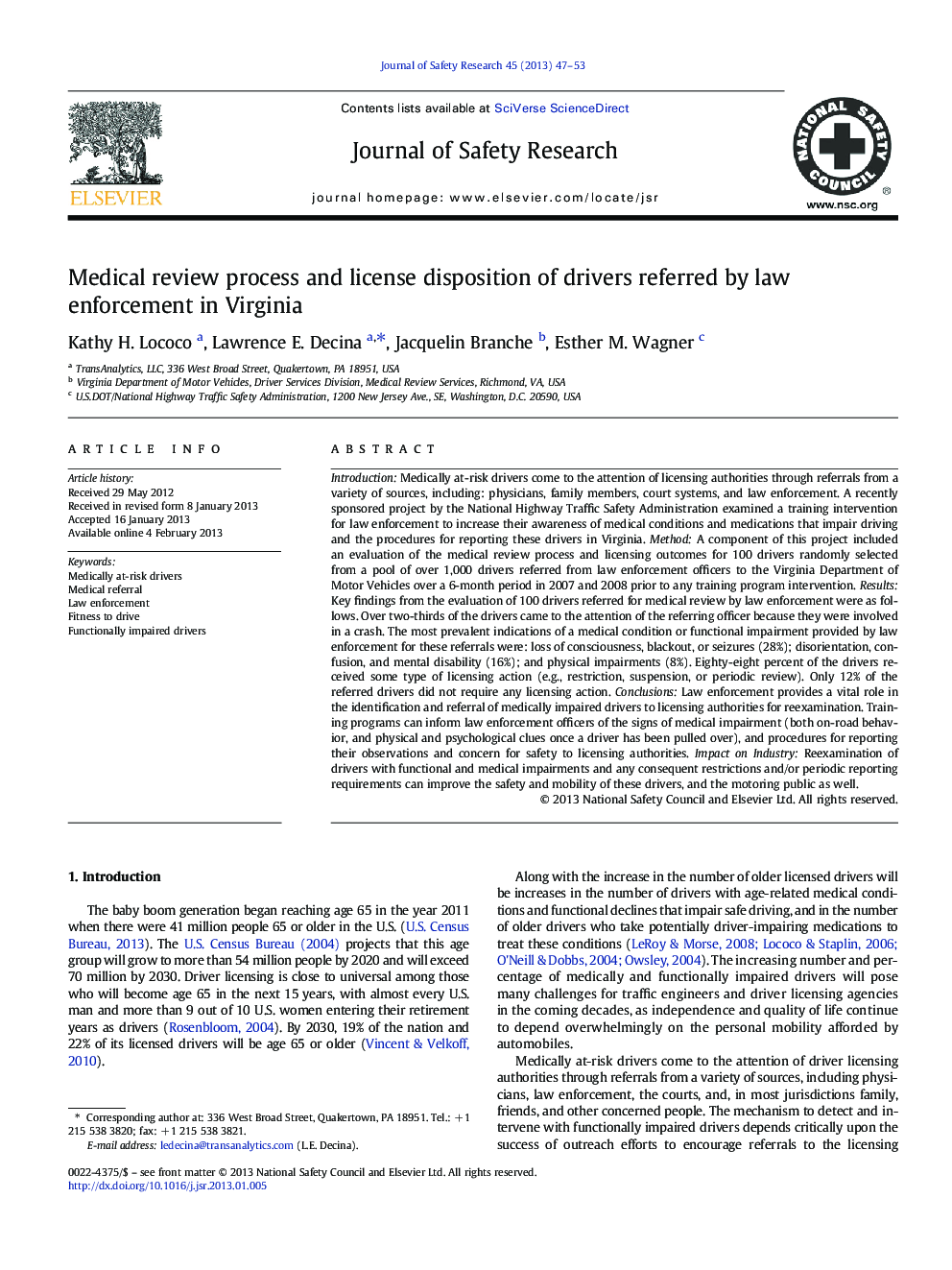| Article ID | Journal | Published Year | Pages | File Type |
|---|---|---|---|---|
| 587372 | Journal of Safety Research | 2013 | 7 Pages |
IntroductionMedically at-risk drivers come to the attention of licensing authorities through referrals from a variety of sources, including: physicians, family members, court systems, and law enforcement. A recently sponsored project by the National Highway Traffic Safety Administration examined a training intervention for law enforcement to increase their awareness of medical conditions and medications that impair driving and the procedures for reporting these drivers in Virginia.MethodA component of this project included an evaluation of the medical review process and licensing outcomes for 100 drivers randomly selected from a pool of over 1,000 drivers referred from law enforcement officers to the Virginia Department of Motor Vehicles over a 6-month period in 2007 and 2008 prior to any training program intervention.ResultsKey findings from the evaluation of 100 drivers referred for medical review by law enforcement were as follows. Over two-thirds of the drivers came to the attention of the referring officer because they were involved in a crash. The most prevalent indications of a medical condition or functional impairment provided by law enforcement for these referrals were: loss of consciousness, blackout, or seizures (28%); disorientation, confusion, and mental disability (16%); and physical impairments (8%). Eighty-eight percent of the drivers received some type of licensing action (e.g., restriction, suspension, or periodic review). Only 12% of the referred drivers did not require any licensing action.ConclusionsLaw enforcement provides a vital role in the identification and referral of medically impaired drivers to licensing authorities for reexamination. Training programs can inform law enforcement officers of the signs of medical impairment (both on-road behavior, and physical and psychological clues once a driver has been pulled over), and procedures for reporting their observations and concern for safety to licensing authorities.Impact on IndustryReexamination of drivers with functional and medical impairments and any consequent restrictions and/or periodic reporting requirements can improve the safety and mobility of these drivers, and the motoring public as well.
► Examined the medical review process and licensing outcomes for 100 drivers in Virginia. ► Drivers were randomly selected from a pool of 1,000 drivers referred from law enforcement officers. ► Virginia Department of Motor Vehicles followed cases over a 6 month period. ► Findings showed 88% of the referrals received some type of licensing action. ► Study provided evidence that law enforcement can be an effective source of referral for medically at-risk drivers.
